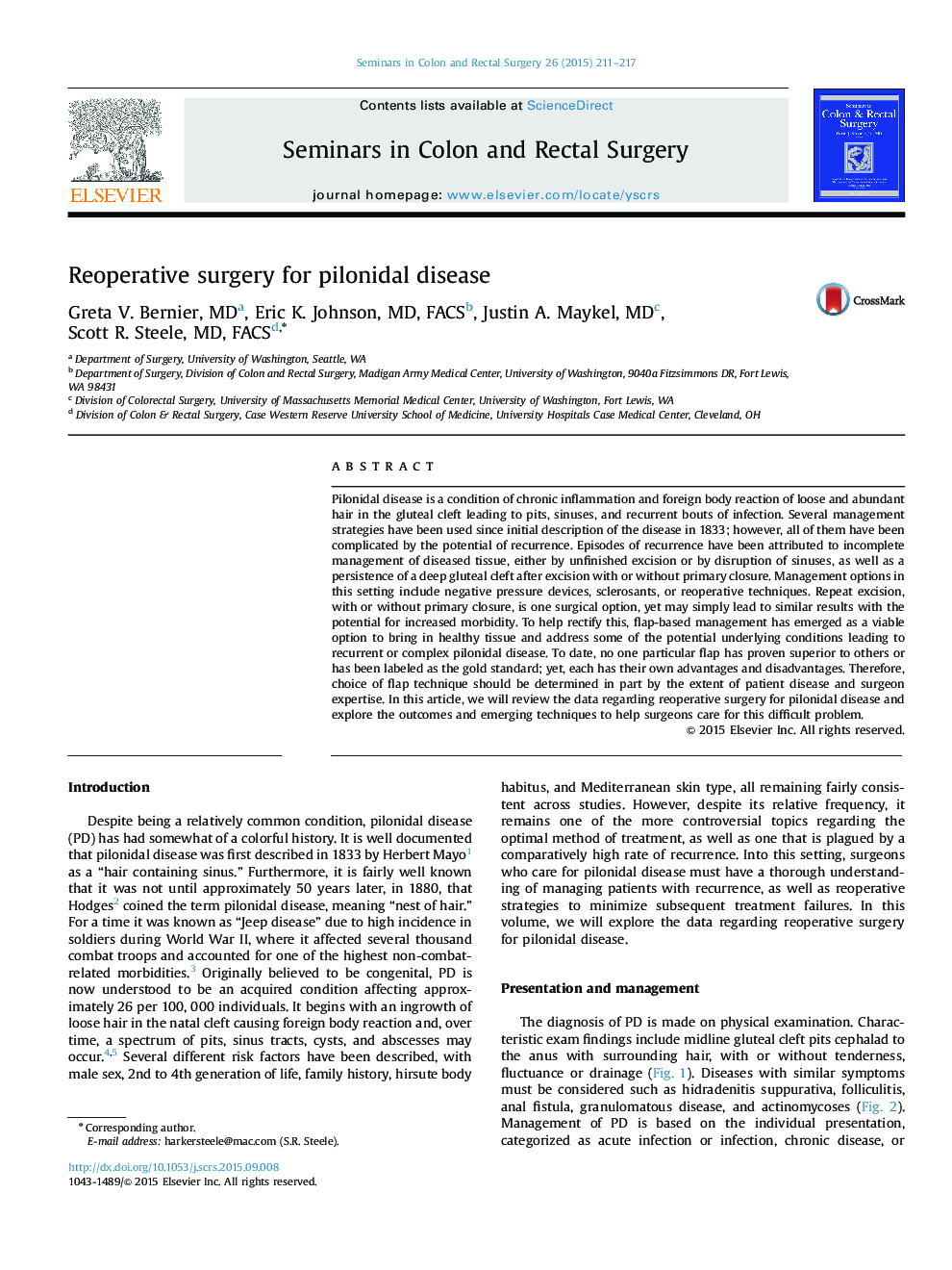| Article ID | Journal | Published Year | Pages | File Type |
|---|---|---|---|---|
| 3319207 | Seminars in Colon and Rectal Surgery | 2015 | 7 Pages |
Pilonidal disease is a condition of chronic inflammation and foreign body reaction of loose and abundant hair in the gluteal cleft leading to pits, sinuses, and recurrent bouts of infection. Several management strategies have been used since initial description of the disease in 1833; however, all of them have been complicated by the potential of recurrence. Episodes of recurrence have been attributed to incomplete management of diseased tissue, either by unfinished excision or by disruption of sinuses, as well as a persistence of a deep gluteal cleft after excision with or without primary closure. Management options in this setting include negative pressure devices, sclerosants, or reoperative techniques. Repeat excision, with or without primary closure, is one surgical option, yet may simply lead to similar results with the potential for increased morbidity. To help rectify this, flap-based management has emerged as a viable option to bring in healthy tissue and address some of the potential underlying conditions leading to recurrent or complex pilonidal disease. To date, no one particular flap has proven superior to others or has been labeled as the gold standard; yet, each has their own advantages and disadvantages. Therefore, choice of flap technique should be determined in part by the extent of patient disease and surgeon expertise. In this article, we will review the data regarding reoperative surgery for pilonidal disease and explore the outcomes and emerging techniques to help surgeons care for this difficult problem.
